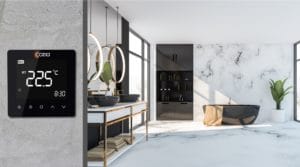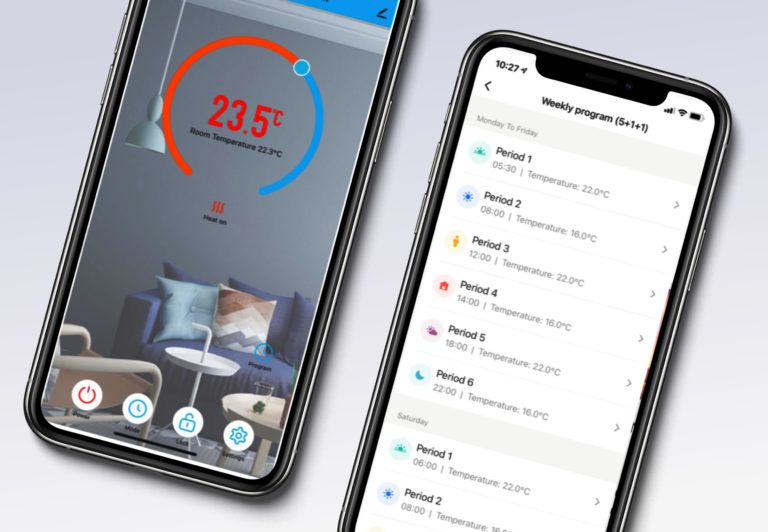Unlike thermostats with basic on/off functions or even programmable controls, Smart thermostats allow you take greater control of your heating schedule through Wi-Fi integration with web & mobile apps from anywhere with an internet connection.
Programmable thermostats have become pretty common over the past few years, and they do allow more flexibility than a basic on/off function. You can manually enter settings to work around your general schedule, for example, turning your heating off completely or to a more energy-efficient setting when you are at work and programming it to kick back on right before you get home. You can also set a different schedule for different days of the week and make manual adjustments whenever required.
But wouldn’t it be great if your thermostat was ‘smart’ enough to adapt automatically to changes in your schedule and ‘learn’ how you like your home heating to function? Using the three main components listed below, Smart thermostats provide a more accessible, user-friendly experience than physically turning a dial or using a control panel to amend your heating settings.
- Smart boiler connection – plugs into your boiler and connects to the thermostat
- Thermostat – connects to the internet via WiFi
- Mobile/device application – controls the settings/timings of your underfloor heating
Now let’s take a look at the main benefits of Smart automation for your heating system:

Efficiency
Ideally everyone wants their home to be heated and cosy when they get home. If you leave the heating on throughout the day to achieve this, it can be very expensive and inefficient, whereas Smart controls will work out exactly what time it needs to turn back on – your heating will be ready, but it is more energy efficient and cost saving at the same time. You can also see exactly how much energy you are using and how much it’s costing you. Multi-room thermostat controls are recommended for those with a large property, allowing you to adjust the settings in each room, turning down or off the heating in rooms that aren’t being used.
Weather response
If it’s colder than usual outdoors, your Smart system will detect the temperature change and turn your heating on a little earlier to compensate. Instead of using a set of sensors to determine the correct heat output, more modern Smart controls achieve this using complex algorithms. They will use the natural heat of your home and make sure it’s always warm enough for you on cold days.


Geo-fencing
Geo-fencing features track the location of members of your household to determine when they are near home, turning on the heating automatically. Sometimes sensors can be used instead, so your Smart control will turn on the heating to the desired temperature by detecting when you’re at home.
Hot water controls
In addition to having full control over your heating system, you can get Smart thermostat that controls your hot water too, also easily scheduled and adjusted from your mobile/tablet.

I hope this guide has been helpful, and if you’re considering Smart controls for your home, feel free to get in touch with us to discuss the right option for you.





